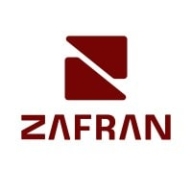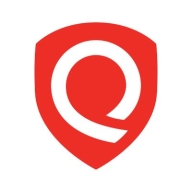


Qualys VMDR and Microsoft Defender for Cloud compete in the vulnerability management space. Qualys VMDR currently has the upper hand due to its comprehensive feature set and flexibility, while Microsoft Defender for Cloud excels in integrating seamlessly with the Azure ecosystem.
Features: Qualys VMDR impresses with continuous monitoring, effective asset tagging, and a robust integration with web application security. Its capabilities in vulnerability detection and management stand out for many users. Microsoft Defender for Cloud, however, is tailored for Azure services, offering robust protection and seamless integration within the Microsoft environment. This ensures users benefit from Azure's deep ecosystem interconnectivity.
Room for Improvement: Qualys VMDR users note challenges with occasional false positives and a complex initial setup. The dashboards could be more intuitive, and reporting has limitations. In contrast, Microsoft Defender for Cloud's users cite issues with configuration complexity and a confusing pricing structure, alongside desires for improved real-time alerting and third-party platform integration enhancements.
Ease of Deployment and Customer Service: Users of Qualys VMDR report varied deployment experiences, particularly in private and hybrid environments. The quality of customer service is inconsistent, with some citing rapid responses and others seeking better support efficiency. Microsoft Defender for Cloud is preferred for its cloud-native deployment within Azure but faces challenges with cross-cloud deployments. Customer service, while generally on par with Qualys, requires improvements in response times.
Pricing and ROI: Qualys VMDR, though perceived as more costly due to its extensive features, offers substantial ROI by effectively reducing vulnerability risks. Licensing costs vary but can benefit from bulk discounts. Microsoft Defender for Cloud provides cost-effective entry points, though additional features can become expensive. Despite licensing complexities, it delivers good ROI by enhancing security within the Azure ecosystem and addressing significant risk exposure.
| Product | Market Share (%) |
|---|---|
| Qualys VMDR | 6.7% |
| Microsoft Defender for Cloud | 5.3% |
| Zafran Security | 1.1% |
| Other | 86.9% |



| Company Size | Count |
|---|---|
| Small Business | 26 |
| Midsize Enterprise | 7 |
| Large Enterprise | 45 |
| Company Size | Count |
|---|---|
| Small Business | 20 |
| Midsize Enterprise | 12 |
| Large Enterprise | 69 |
Zafran Security integrates with existing security tools to identify and mitigate vulnerabilities effectively, proving that most critical vulnerabilities are not exploitable, optimizing threat management.
Zafran Security introduces an innovative operating model for managing security threats and vulnerabilities. By leveraging the threat exposure management platform, it pinpoints and prioritizes exploitable vulnerabilities, reducing risk through immediate remediation. This platform enhances your hybrid cloud security by normalizing vulnerability signals and integrating specific IT context data, such as CVE runtime presence and internet asset reachability, into its analysis. No longer reliant on patch windows, Zafran Security allows you to manage risks actively.
What are the key features of Zafran Security?
What benefits can users expect from Zafran Security?
In industries where security is paramount, such as finance and healthcare, Zafran Security provides invaluable protection by ensuring that only exploitable vulnerabilities are addressed. It allows entities to maintain robust security measures while allocating resources efficiently, fitting seamlessly into existing security strategies.
Microsoft Defender for Cloud is a comprehensive security solution that provides advanced threat protection for cloud workloads. It offers real-time visibility into the security posture of cloud environments, enabling organizations to quickly identify and respond to potential threats. With its advanced machine learning capabilities, Microsoft Defender for Cloud can detect and block sophisticated attacks, including zero-day exploits and fileless malware.
The solution also provides automated remediation capabilities, allowing security teams to quickly and easily respond to security incidents. With Microsoft Defender for Cloud, organizations can ensure the security and compliance of their cloud workloads, while reducing the burden on their security teams.
Vulnerability Management, Detection, and Response (VMDR) is a cornerstone product of the Qualys TruRisk Platform and a global leader in the enterprise-grade vulnerability management (VM) vendor space. With VMDR, enterprises are empowered with visibility and insight into cyber risk exposure - making it easy to prioritize vulnerabilities, assets, or groups of assets based on business risk. Security teams can take action to mitigate risk, helping the business measure their actual risk exposure over time.
Qualys VMDR offers an all-inclusive risk-based vulnerability management solution to prioritize vulnerabilities and assets based on risk and business criticality. VMDR seamlessly integrates with configuration management databases (CMDB), Qualys Patch Management, Custom Assessment and Remediation (CAR), Qualys TotalCloud and other Qualys and non-Qualys solutions to facilitate vulnerability detection and remediation across the entire enterprise.
With VMDR, users are empowered with actionable risk insights that translate vulnerabilities and exploits into optimized remediation actions based on business impact. Qualys customers can now aggregate and orchestrate data from the Qualys Threat Library, 25+ threat intelligence feeds, and third-party security and IT solutions, empowering organizations to measure, communicate, and eliminate risk across on-premises, hybrid, and cloud environments.
We monitor all Vulnerability Management reviews to prevent fraudulent reviews and keep review quality high. We do not post reviews by company employees or direct competitors. We validate each review for authenticity via cross-reference with LinkedIn, and personal follow-up with the reviewer when necessary.